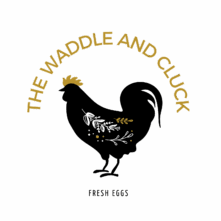The first time I heard someone say composting was “garden gold,” I rolled my eyes. It sounded like something you’d hear in a commercial for overpriced fertilizer. But after doing it myself, I get it. And, I had no idea how to start composting.
There’s something incredibly satisfying about taking what most people toss—scraps, shells, peels, leaves—and turning it into dark, rich, earthy goodness. And the best part? You don’t have to be an expert or even have a garden yet to get started.
Let’s dig in to how to start composting.

Why Composting Matters More Than You Think
If you’re growing anything—or even thinking about it—composting is worth learning. It cuts down on waste, gives your soil a serious nutrient boost, and honestly makes you feel like some kind of earth alchemist. One day it’s banana peels and eggshells, the next it’s feeding your future tomatoes.
Plus, there’s a kind of quiet joy in knowing you’re doing something good for your little patch of the planet. No need to shout it from the rooftops. Just compost and carry on.
What You Can (and Can’t) Compost
Here’s the basic rule: if it came from a plant, it probably belongs in your compost.
In the composting world, everything falls into two categories—greens and browns. Greens are your kitchen scraps: coffee grounds, fruit and veggie peels, tea bags, wilted lettuce. They give the pile nitrogen and help it heat up. Browns are things like dry leaves, cardboard, and straw—they provide carbon and help keep the pile from turning into a slimy mess.
What doesn’t belong?
Meat, dairy, anything greasy, chemically treated wood, and diseased plants. Those things either smell bad, attract pests, or can carry issues into your garden later.

How to Start Composting: Don’t Overthink It
You can go as simple or as structured as you want. Some people build wooden bins or buy fancy compost tumblers. I started with a heap in the corner of the yard and a pitchfork.
Location-wise, pick a spot with good drainage and easy access to water. You want it somewhere convenient—not so far away that it feels like a chore to dump scraps.
You can even compost in your kitchen with a kitchen compost bin.
Start layering: a little green, a little brown. Keep it loose, not packed. You’re aiming for a pile that’s moist but not soggy, and big enough to retain some heat—three feet by three feet is a solid starting size.
And yes, it’ll look like a mess for a while. That’s part of the charm.
Keep It Going Without Losing Steam
The key to good compost is balance. Too much green? It starts to stink. Too much brown? It dries out and takes forever. Somewhere around a 3:1 ratio of browns to greens is the sweet spot.
Give it a turn every week or two to add air. Add water if it’s dry. And if you’re like me and sometimes forget about it, don’t worry—it still breaks down. Just slower.
Eventually, the pile turns dark and crumbly and smells like a forest floor. That’s how you know it’s ready.

If Something Goes Wrong (It Will), Don’t Panix
The first time my compost pile smelled like a swamp, I thought I’d ruined it. Turns out I just needed to add more browns and give it a good stir. Problem solved.
You’ll probably run into some kind of hiccup—flies, weird smells, slow decomposition. But that’s normal. Adjust, wait, and it’ll usually sort itself out. Compost is more forgiving than people give it credit for.
No Garden? Compost Anyway.
Here’s the thing no one says enough: you don’t need a garden to start composting. You can use that finished compost to improve flower beds, feed houseplants, or share with neighbors. Or you can just start building a soil stockpile for when you do plant something.
And if you’re into chickens (which I obviously am), they love scratching through compost piles for bugs. It’s like a double win—food for them, future food for you.
You can even compost in the winter.

Composting Is a Lifestyle Shift (But a Good One)
This isn’t just about dirt. It’s about changing how you see waste. You start noticing what’s going into the trash, thinking twice before tossing food, and finding ways to keep more in the loop and less in the landfill.
You also start to appreciate the slow work. Compost doesn’t give you instant results—but it always gives back, eventually.
And honestly, there’s something pretty great about standing over a pile of what used to be garbage and knowing you turned it into something that will help grow dinner.
Final Thought? Start Scraps First
If you’re not ready to build a pile yet, just start saving your scraps. Keep a small bin or bowl near the sink. Toss in coffee grounds, veggie ends, eggshells. See what you collect in a week. You’ll be amazed.
From there, start a pile, or grab a bin, or ask around for old leaves and cardboard. Just start. That’s the biggest step.
Everything else? It’ll break down in time.








